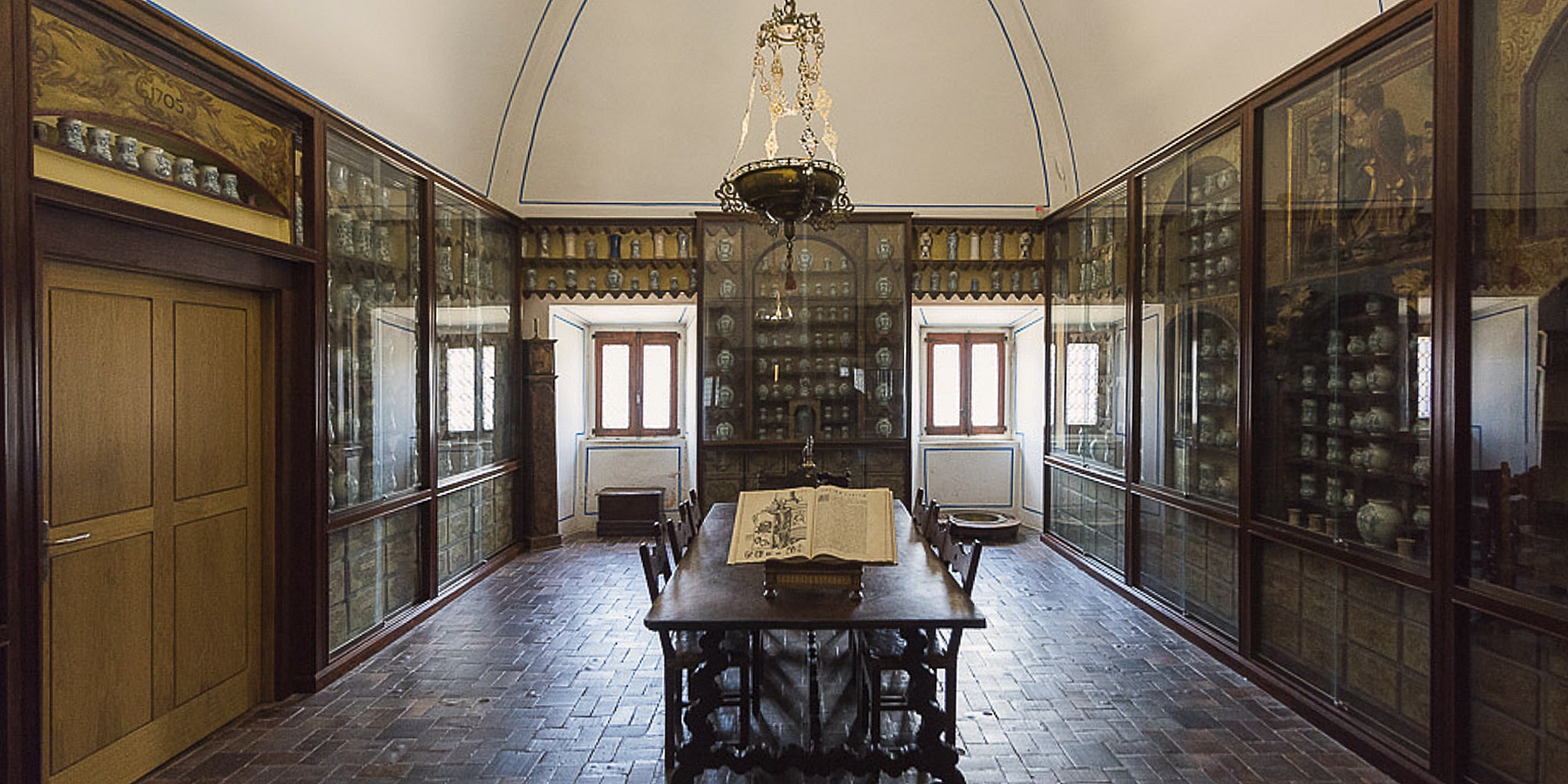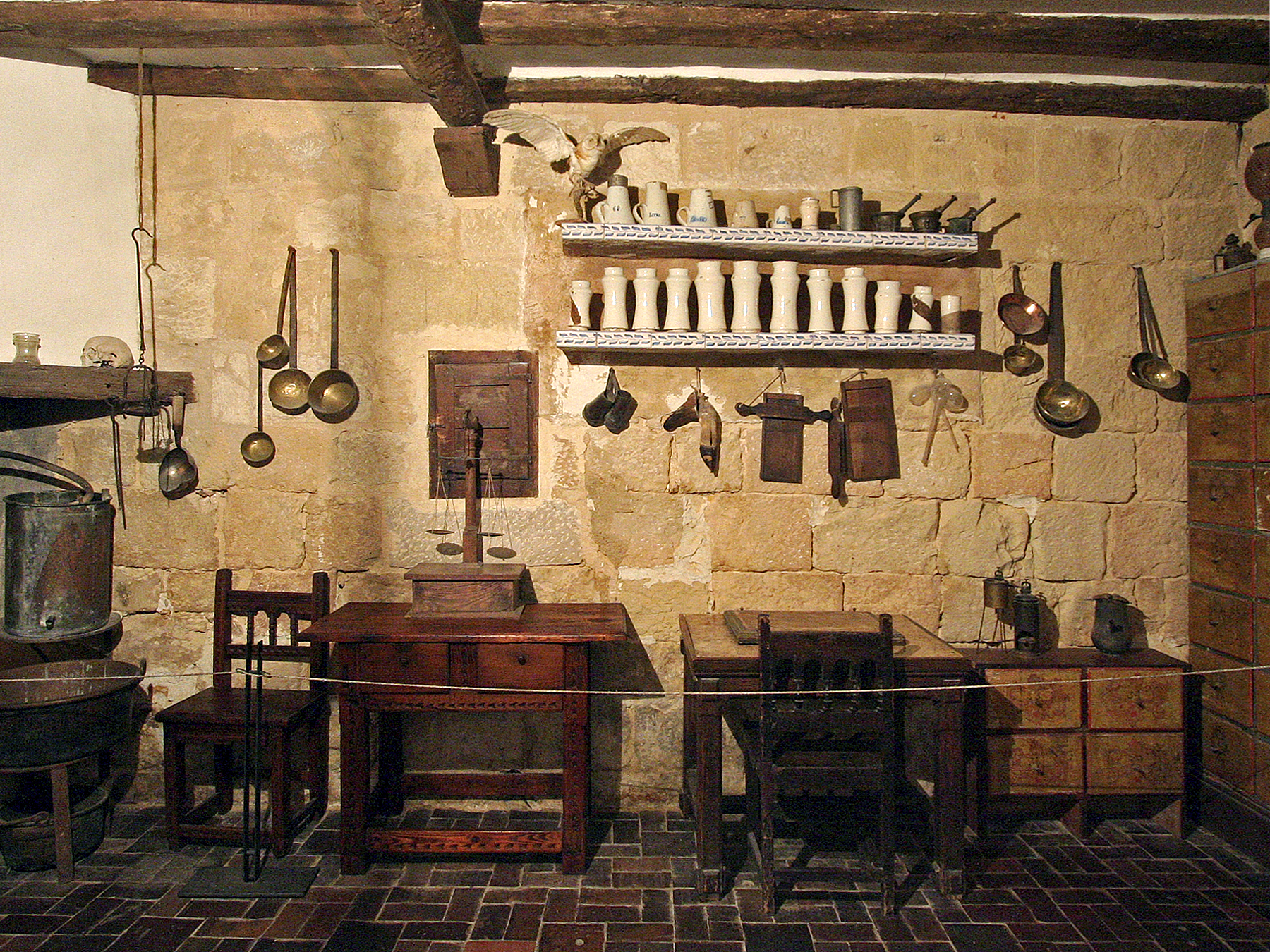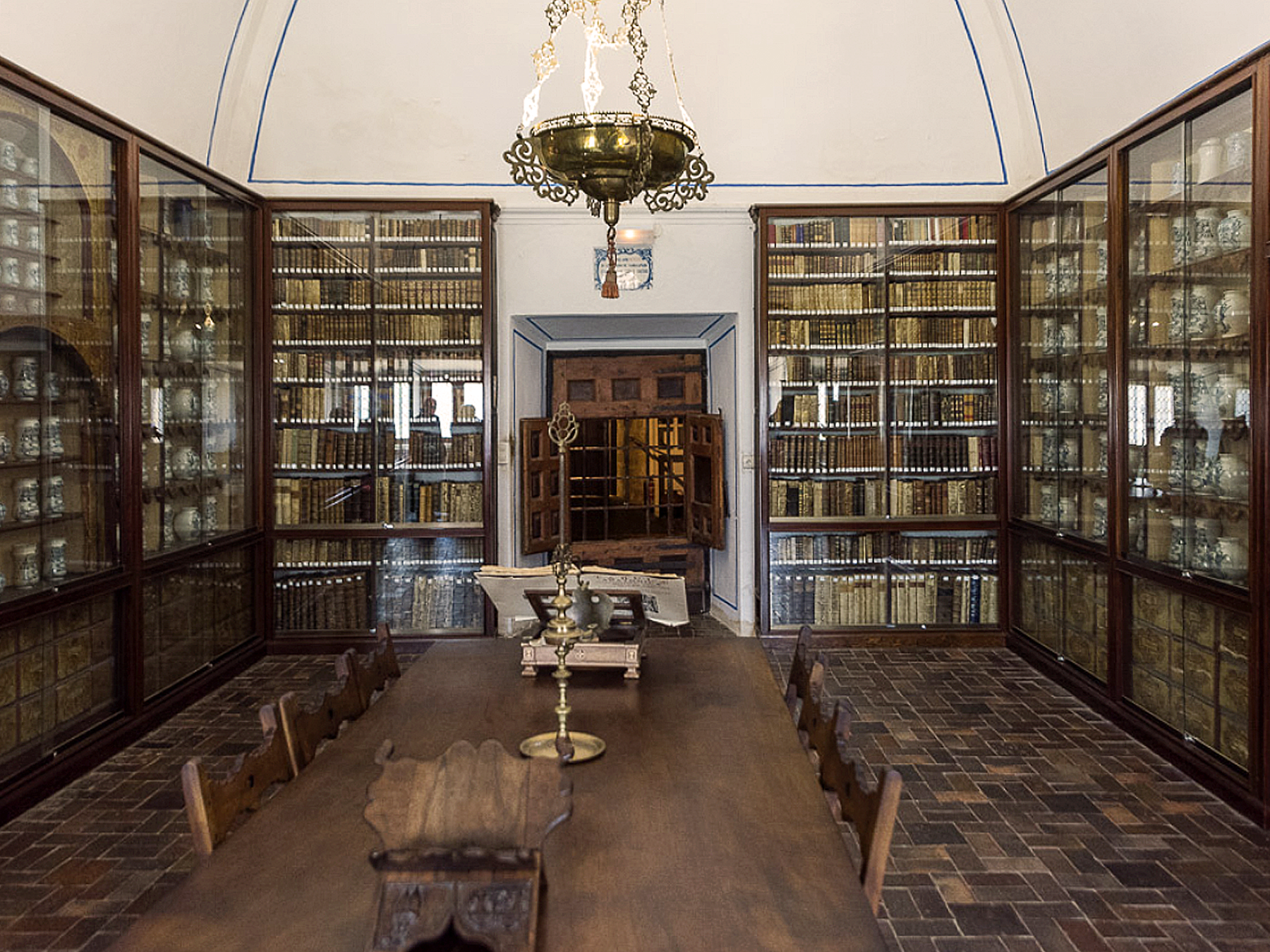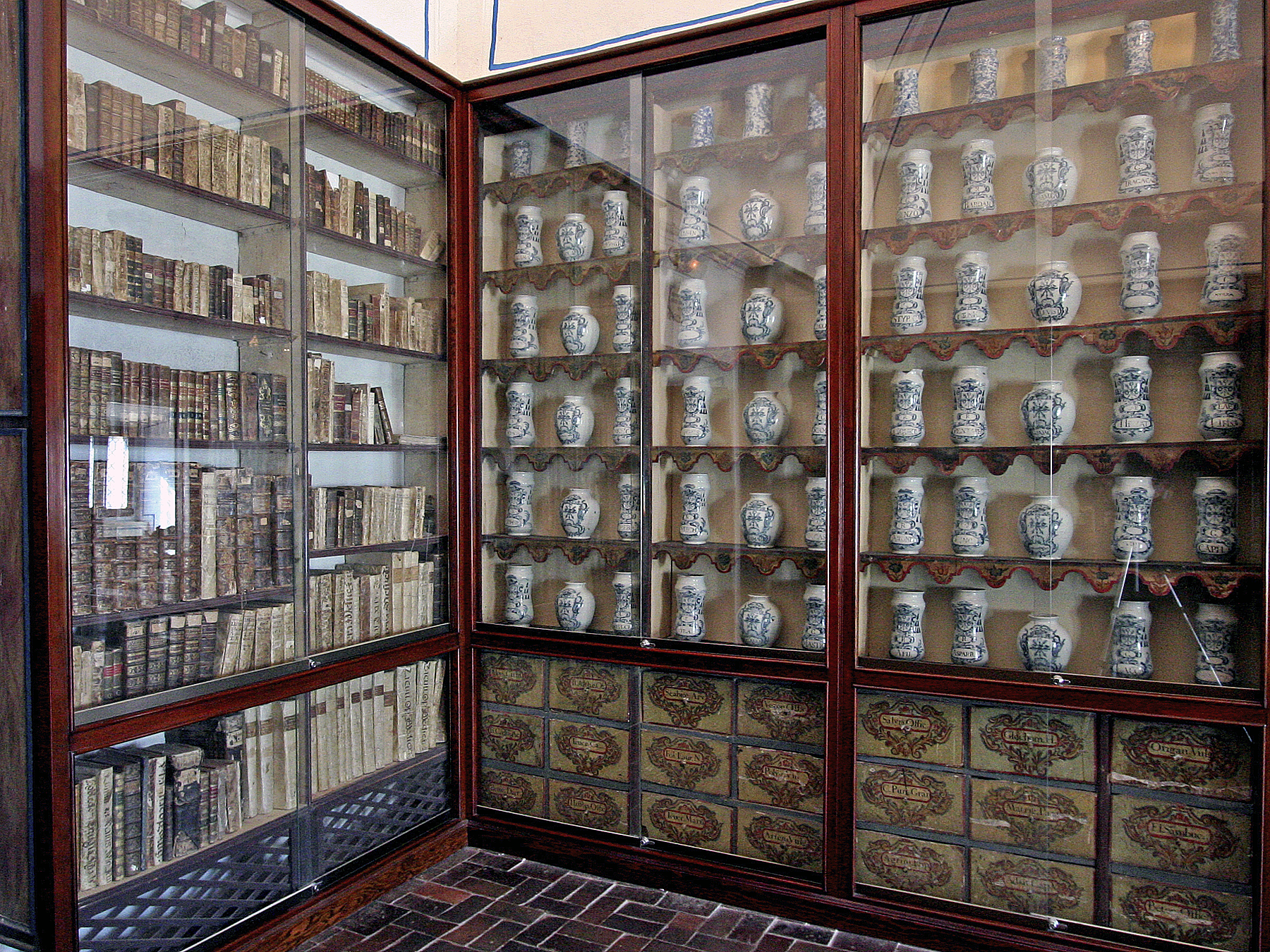Monastic communities had the knowledge to treat the illnesses of both the monks and those of nearby or transitory populations. This led to the emergence of small hospital care centres and other centres specialising in certain diseases, such as leprosy. In the Santo Domingo de Silos monastery we can visit the fascinating apothecary from the early 18th century which, although not in its original location, has been faithfully reconstructed and assembled with historical pieces.
The recovery of a large part of the old apothecary’s shop is due to Juan de Aguirre y Achútegui, who bought it from Octavio Castrillo in 1927 and gave it to the Abbey when it was about to be sold and moved abroad. The monastery itself recovered several shelves, jars and drawers between 1957 and 1967.
The apothecary shop consisted of a specialised library, a botanical garden for the cultivation of medicinal plants, a biochemical laboratory and a storeroom for storing the plants or medicines produced.
The library has more than 400 volumes, the oldest from the 16th century and most of them from the 18th and 19th centuries. Among them is a 1525 copy of the major work on pharmacology by Dioscorides – a Romano-Greek physician, pharmacologist and botanist from the 1st century AD, whose work was a point of reference for many centuries, with several copies and versions being made in the Middle Ages and until the 18th century in different languages. The library was recovered in 1918 thanks to a monk of the Silos community, Father Daniel Palomero, a relative of the last apothecary of Silos, Francisco Palomero.
The jar collection consists of four hundred earthenware pieces made in Talavera de la Reina expressly for the monastery and decorated with the monastery’s coat of arms. They are stored in appropriate 18th century racks and chests of drawers. In the laboratory area, a chimney has been reproduced and a still and various instruments for the processing of pharmacological substances have been preserved.





